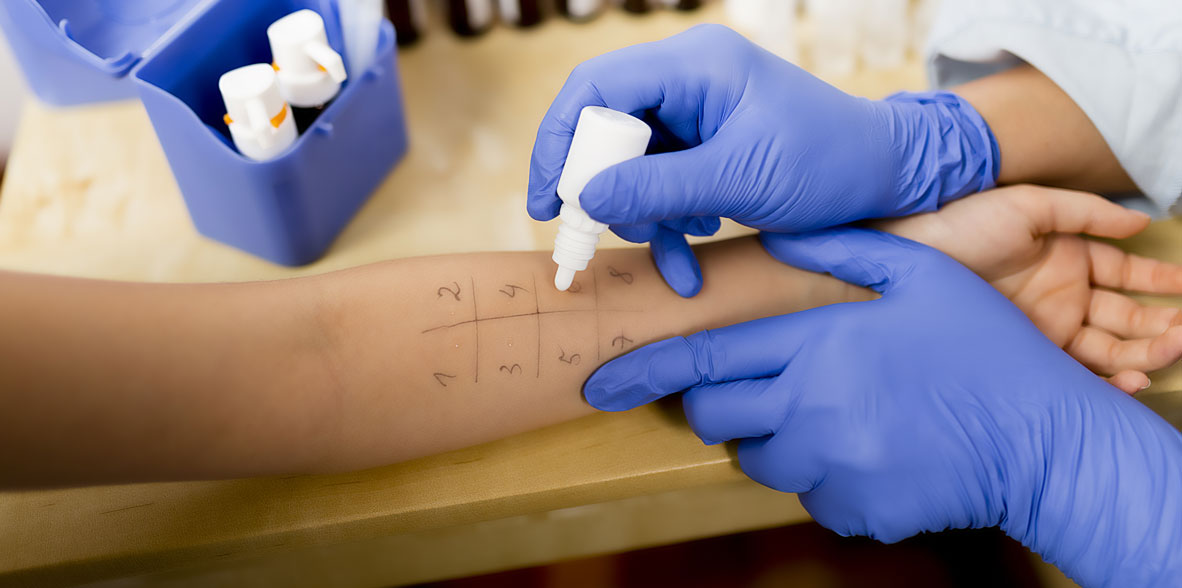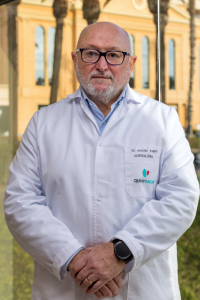

 Centro Médico Teknonen/health-centers/centro-medico-teknon
Centro Médico Teknonen/health-centers/centro-medico-teknon- Centro Médico Teknonen/health-centers/centro-medico-teknon
- Centro Médico Teknonen/health-centers/centro-medico-teknon
 Centro Médico Teknonen/health-centers/centro-medico-teknon
Centro Médico Teknonen/health-centers/centro-medico-teknon
What is food allergy?
Foods, whether natural or modified, and additives can cause adverse reactions to the person who ingests or comes into contact with them. A large number of these reactions are due to an immunological reaction between the proteins in the food and the specific antibodies produced by the person with a food allergy. Occasionally, adverse reactions or food intolerance can occur without the cause being allergy (toxicity, enzyme deficiency in the person ingesting the food, etc.).
Food allergy is very common in childhood (affecting 10-15% of the population), while in adulthood it is much less frequent (less than 2%).
- How does food allergy manifest itself?
In immunoglobulin E (IgE)-mediated food allergy, the reaction occurs within minutes of eating, touching or even inhaling the food triggering the reaction. Symptoms can vary from simple itching and redness around the mouth to a severe reaction with edema of the mouth and tongue, vomiting, abdominal pain, diarrhea, asthma, urticaria. There is a risk of life-threatening anaphylaxis.
The foods responsible for the allergy can be very diverse. In infants, hypersensitivity to cow's milk and egg is of great importance. Other allergenic foods are nuts, seafood and fish, cereals and fruits.
Intolerance to gluten (proteins present in some common cereals) causes celiac disease, which is not a food allergy.
- How is food allergy diagnosed?
 Prick testIt is very common that the patient himself or the child's parents detect the reaction and the food that probably produces it. Many young children absolutely reject the ingestion of some of these foods.
Prick testIt is very common that the patient himself or the child's parents detect the reaction and the food that probably produces it. Many young children absolutely reject the ingestion of some of these foods.The specialist should take a systematic and exhaustive clinical history to guide the allergological diagnosis. If the age of the child allows it, prick skin tests or blood tests will be performed to determine allergy markers (total IgE) and specific IgE or IgG antibodies to the suspected food or foods.
Once the diagnosis of food allergy has been established, the food should be eliminated from the diet and the symptoms should regress. In case of doubt, a controlled and progressive reintroduction of the food to be studied can be carried out to check whether the symptoms recur or not.
- What is the treatment for food allergy?
The single most effective treatment is to avoid the food causing the allergy. Patients and parents of affected children should carefully check the labels of the food to be eaten. Special vigilance is very important in restaurants and group meals.
In children who have practiced the exclusion of milk and egg, after years and after reviewing the results of tests and analyses, the food can be progressively reintroduced and in many cases an adequate tolerance is reached.
In case of accidental ingestion of the food causing the allergy, the administration of antihistamines, corticoids and even injectable adrenaline may be necessary.
At present, a vaccine for local administration (sublingual) is available for peach (Prunus pérsica) proteins, which in cases of very severe reactions (anaphylaxis) allows reaching an important degree of desensitization.



































